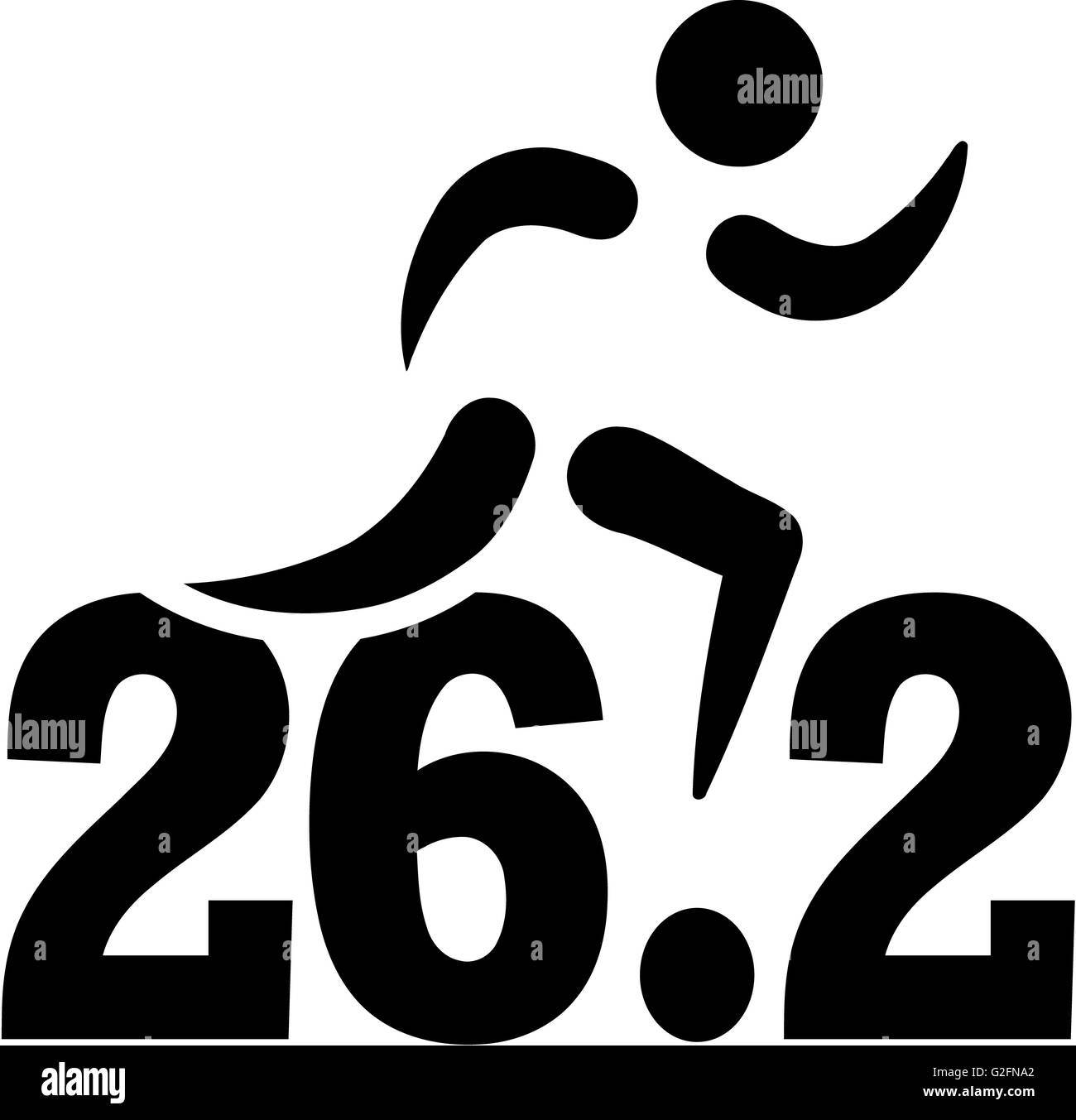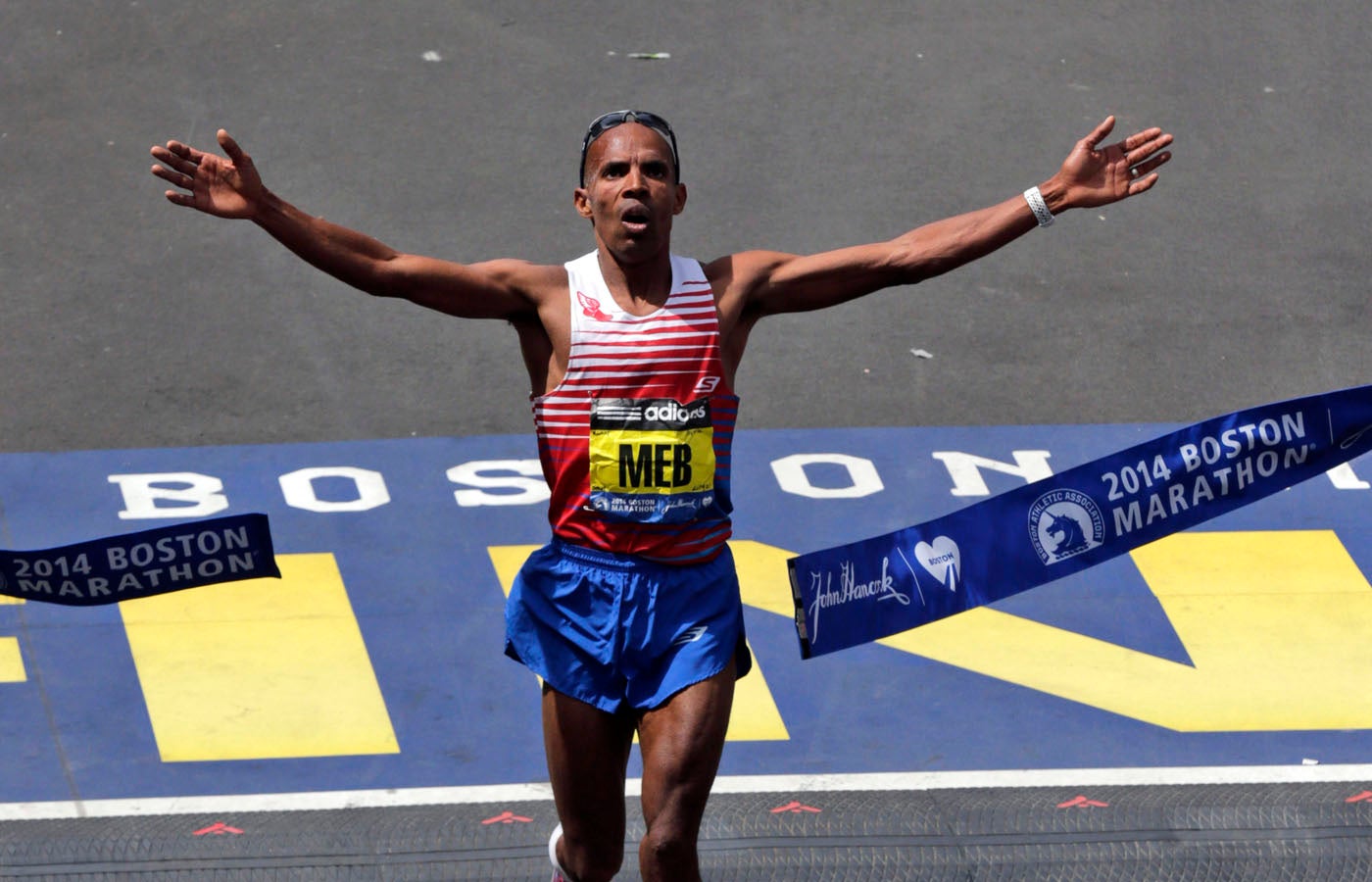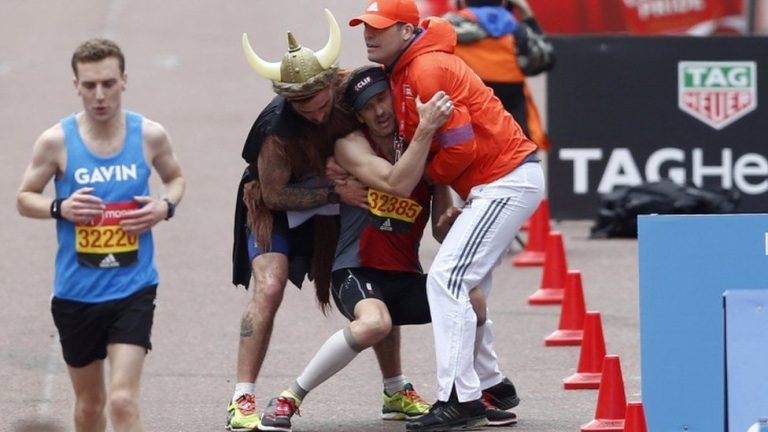Why is Marathon 26.2 Miles
Marathon is 26.2 miles because of the distance run in the 1908 London Olympics. The marathon course was altered to complete the length from Windsor Castle to Olympia in London.
This distance was then standardized in 1921 and has since become the official marathon distance. The 26. 2-mile length challenges runners both physically and mentally, making it a true test of endurance and determination. Participants train rigorously to conquer this iconic distance, pushing themselves to their limits to cross the finish line.
The allure of the marathon lies in its reputation for being a challenging yet rewarding feat, attracting runners from around the world to push themselves to achieve this ambitious goal.

Credit: www.alamy.com
History Of The Marathon
The history of the marathon dates back to ancient Greece, with its origins rooted in a pivotal moment of courage and perseverance. The marathon, a grueling 26.2-mile race, has captivated the imagination of athletes and spectators alike, but have you ever wondered why it spans precisely this distance?
Origin Of The Marathon
The marathon finds its origins in Greek history, tracing back to the Battle of Marathon in 490 BC. Legend has it that a messenger, named Pheidippides, was tasked with delivering a message of victory from the battlefield of Marathon to the city of Athens, a distance of approximately 26.2 miles. His astounding feat of endurance became the inspiration behind the modern-day marathon race.
The First Marathon Race
The first organized marathon race as we know it today took place at the inaugural modern Olympic Games in Athens in 1896. This event aimed to commemorate the heroic run of Pheidippides and captured the spirit of ancient Greek athletic contests. Spirited runners from around the world gathered to conquer the challenging 26.2-mile distance, marking the beginning of a tradition that continues to inspire athletes worldwide.
The Standardization Of Marathon Distance
In the world of long-distance running, the marathon has solidified its place as the ultimate test of endurance. One intriguing aspect of the marathon is its precise distance of 26.2 miles, a figure that has now become globally recognized and standardized.
Marathon At The Olympics
The marathon’s inclusion in the Olympic Games has played a significant role in elevating its status as the pinnacle of long-distance running competitions.
The Influence Of The 1908 London Olympics
The 1908 London Olympics were pivotal in shaping the modern marathon distance. The race course was extended to 26.2 miles to accommodate the British royal family, leaving a lasting impact on the marathon’s standard distance.
The Story Behind 26.2 Miles
The marathon distance of 26.2 miles is a universally recognized challenge for runners around the world. The history behind this specific distance dates back to the early 20th century and is steeped in tradition and royal influence.
The 1908 London Olympics
In the 1908 London Olympics, the marathon distance was not fixed at 26.2 miles. The race was initially meant to be 26 miles but was extended by 385 yards to finish in front of the royal family’s viewing box.
The Royal Family’s Influence
The decision to extend the marathon distance to 26.2 miles was influenced by the royal family. King Edward VII requested the race to start at Windsor Castle and finish in front of the royal box at the Olympic Stadium, adding the extra distance.

Credit: www.canaanvalleyhalfmarathon.com
Scientific Explanations For The Distance
The Marathon, spanning a distance of 26.2 miles, has intrigued and fascinated athletes and fitness enthusiasts for generations. The question that arises – what is the reason behind this seemingly arbitrary distance? Science provides us with much-needed insights into the 26.2-mile length of a marathon. Understanding human physiology and the optimal distance for performance sheds light on this enduring mystery.
Human Physiology And Endurance
Human physiology plays a pivotal role in determining the optimal distance for a marathon. The body’s energy systems, cardiovascular capabilities, and musculoskeletal endurance are crucial factors in determining a distance that challenges but doesn’t overwhelm the human body. The 26.2-mile distance is carefully calibrated to push the limits of human endurance while minimizing the risk of overexertion and injury.
The Optimal Distance For Performance
When it comes to performance, the 26.2-mile distance represents a delicate balance between energy expenditure and efficiency. This distance allows athletes to tap into their anaerobic and aerobic capacities without reaching a point of diminishing returns. Scientific studies show that the 26.2-mile distance optimizes the utilization of both glycogen and fat stores, resulting in a sustainable pace for the duration of the marathon.
The Enduring Legacy Of 26.2 Miles
Marathon’s iconic distance of 26. 2 miles has become a lasting symbol of human endurance and achievement. From its historical origins to its modern significance, the marathon distance continues to captivate and inspire athletes around the world.
The Enduring Legacy of 26.2 Miles The marathon, a race of 26.2 miles or 42.195 kilometers, has become an enduring symbol of human determination and athletic achievement. But have you ever wondered why marathon distance is precisely 26.2 miles? The answer lies in a fascinating story that combines ancient history, sports culture, and the spirit of rivalry. In this blog post, we will explore the enduring legacy of 26.2 miles, uncovering the symbolism of marathon distance and the global reach of marathon running.The Symbolism Of Marathon Distance
The 26.2 miles of a marathon race holds significant symbolism that dates back to ancient Greece. In the fifth century BCE, a Greek messenger named Pheidippides is said to have run from the city of Marathon to Athens to deliver a message about the Greek victory over the Persians in the Battle of Marathon. This feat of endurance inspired the modern-day marathon race we know today. The distance from Marathon to Athens was approximately 25 miles or 40 kilometers. However, when the marathon race was included in the inaugural modern Olympic Games in 1896, it was decided to extend the distance by 1.2 miles so that the race could start at Windsor Castle and finish in front of the royal box at the Olympic Stadium in London. This additional distance became a permanent fixture, establishing the marathon distance at 26.2 miles. The symbolism of marathon distance extends beyond its historical origins. It represents the ultimate test of physical and mental endurance, challenging runners to push themselves to their limits and overcome obstacles. The marathon distance is also a reminder of the human spirit’s ability to conquer adversity and achieve greatness, making it an iconic distance in the world of athletics.The Global Reach Of Marathon Running
As the popularity of marathon races continues to soar, the global reach of marathon running becomes more evident. People from all walks of life and different corners of the world are drawn to the challenge and excitement of completing a marathon. Whether it’s participating in major international marathons like the Boston Marathon or the London Marathon or running in local community races, marathon running has become a global phenomenon. Countries around the world host their own marathon events, attracting both professional athletes and amateur runners. The marathon brings people together, fostering a sense of camaraderie and accomplishment. It serves as a platform for individuals to set and achieve personal goals, inspiring others to follow suit. Not only has marathon running become a personal quest for many individuals, but it has also evolved into a significant source of tourism and economic development for host cities. Marathons like the New York City Marathon and the Tokyo Marathon, attract thousands of visitors who contribute to the local economy through accommodation, transportation, and tourism-related spending. In conclusion, the enduring legacy of 26.2 miles lies in its symbolism and global reach. The marathon’s distance, initially inspired by a historical journey, has become a symbol of human determination and achievement. Today, marathon running transcends borders, bringing people together to celebrate the triumph of the human spirit. Whether as participants or spectators, the significance of 26.2 miles in the world of marathon running is here to stay. Note: The above response is written in HTML format suitable for WordPress.
Credit: marathonhandbook.com
Frequently Asked Questions On Why Is Marathon 26.2 Miles
Faq 1: How Did The Marathon Distance Become 26.2 Miles?
The Marathon distance of 26. 2 miles has historical roots dating back to the 1908 London Olympics, where the course was extended to accommodate royalty.
Faq 2: Why Is A Marathon 26.2 Miles And Not A Round Number?
The peculiar distance of 26. 2 miles is the result of the Marathon being measured based on the distance from Windsor Castle to the Olympic Stadium in London.
Faq 3: Why Is The Marathon Distance So Challenging For Runners?
The 26. 2 mile distance of a Marathon presents a challenge due to its significant length, testing endurance, stamina, and mental strength of runners.
Conclusion
In the world of marathons, the 26. 2-mile distance has become iconic, representing a test of physical and mental endurance. Through history and tradition, the marathon distance has become firmly embedded in our culture as the ultimate challenge. Understanding the origins and significance of the 26.
2-mile distance adds depth to the experience of running a marathon.






